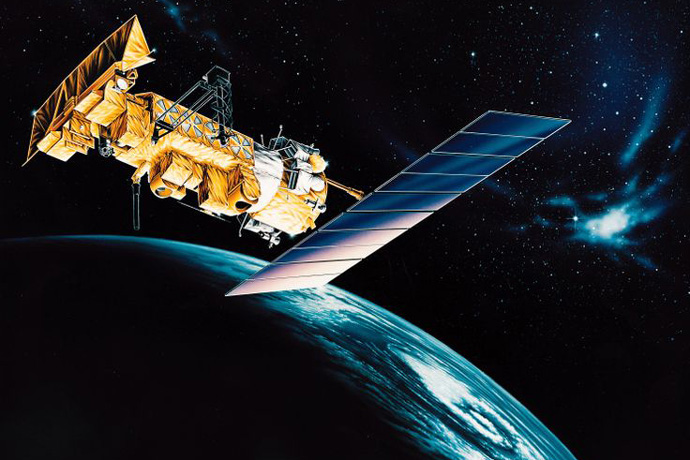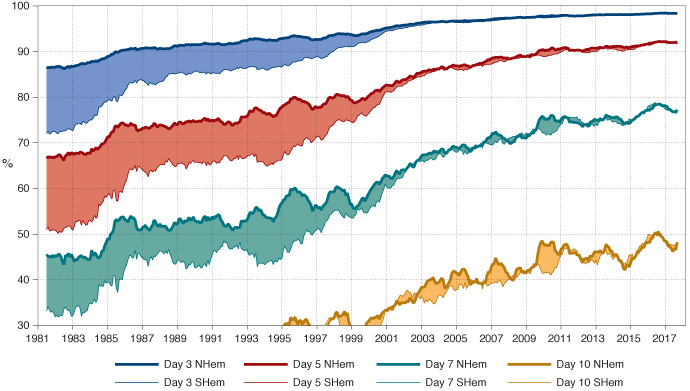

Artist’s impression of NOAA-17, which was launched four years after NOAA-15. (Image: NASA)
Sunday 13 May marks the 20th anniversary of the start of a new era in meteorological satellite observations.
On 13 May 1998, the NOAA-15 satellite was launched at 8.52 p.m. Pacific time from Vandenberg Air Base in California, beginning the ATOVS series of satellite observations that continues to this day.
Subsequent launches included NOAA-16 through to 20 and the European Metop satellites as well as similar instruments on Chinese, US Department of Defence and Russian satellites.
ATOVS was the first major enhancement in polar satellite instrument observing capability since the first operational system was launched 20 years earlier in 1978.
For the first time, the microwave sounding capability included both temperature and humidity.
Previously the infrared sounder was the primary instrument, but this was restricted to cloud-free areas. The new microwave sounders provided data of comparable quality, but in clear and cloudy regions.
Better forecasts
A few months after NOAA-15 was declared operational later in 1998, the use of the new observations resulted in a major improvement in forecast quality, especially in the southern hemisphere.
In the early nineties forecast skill was considerably lower in the southern hemisphere than in the northern hemisphere.
This was because there were fewer weather observations in that part of the globe to help initialise forecasts.
The gap in skill narrowed when data assimilation at ECMWF moved from 3D-Var to 4D-Var, and again when NOAA-15 was launched. Subsequent satellite launches reduced the gap to virtually zero.

The chart shows the evolution of the 12-month running mean of the anomaly correlation, a measure of skill, for 500 hPa geopotential height forecasts in the northern and the southern hemisphere at various lead times. During the nineties, the gap between the northern and the southern hemisphere narrowed. Since then it has virtually disappeared.
Happy Birthday!
NOAA-15 provided not only the first in a major new generation of instruments but has also proven one of the most durable.
Indeed, ECMWF is still assimilating data from NOAA-15, 20 years on.
Since the start of the ATOVS era, there has been an acceleration of new satellite capability, for example the hyperspectral infrared sounders.
Nevertheless, the new microwave capability first provided by NOAA-15 remains a critical element of the global observing system.
Happy Birthday, NOAA-15!
